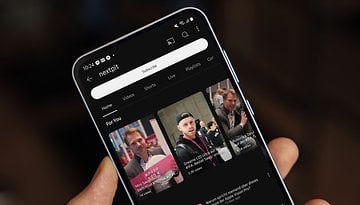Perfect on paper, so where are all the maglev trains?


Maglev trains, a term that comes from a blend between ‘magnetic’ and ‘levitation’, offer so much promise. You may have heard of the so-called “floating trains”, and the term is accurate and deliverable today. So where are they?
What is a maglev train?
The idea behind maglev trains is fairly simple on paper. Have you ever taken two magnets and done that thing where you try to force the same poles together to feel them repel each other? Well, that’s basically the idea behind floating trains. You take high-powered electromagnets and slap them on the underside of the train and on the top of the track, and voila, you’ve got a floating train.
Of course, the actual implementation is a little more engineered than that. Maglev trains can be split into two main forms of the tech: electromagnetic suspension (EMS), where the electromagnets are fitting to the train and repel the steel track, and electrodynamic suspension (EDS), where superconducting electromagnets create a magnetic field that is used to push and pull the train along a guideway.
The idea has been around longer than you think. In fact, the first magnetic systems of transportation were described in patents that date back to the late 1950s. It wasn’t until 1979 in Hamburg, Germany, that we saw the first maglev train with longstator propulsion licensed for passenger transportation. A trial at the International Transportation Exhibition in the same city shuttled passengers along a 908 meter stretch of track.
Older readers may have also traveled on West Berlin’s M-Bahn in the late 1980s. It only ran for a couple of years before the project was shelved after reunification. The last M-Bahn trains came to a halt in 1991.
The title of world’s first commercial maglev train operation belongs to the Brits, though, which was claimed when the Birmingham International Airport AirRail Link opened in 1984. It was slow, and kind of useless, but don’t tell the Brexiteers that. It was closed in July 1995 when it was deemed too expensive to run.
Around the same time in the USSR, the Russians were experimenting with cars on magnetic suspension tracks. As many as five different prototypes were built between 1970 and 1980, and the cars could reach speeds up to 100 km/h.
Engineers in Asia, more specifically in Japan, South Korea, and China, have all gotten maglev routes up and running. Some of these, such as the Beijing S1 Line, are low-speed urban lines. The most famous, the Shanghai Maglev, however, can reach up to speeds of 430 km/h (270 mph). It is the fastest, first commercially successful, operational maglev train in the world, taking passengers from Shanghai Pudong International Airport to the outskirts of central Pudong - a distance of 30.5 km (19 miles) - in just 8 minutes. I myself have made this journey, and it’s a glorious way to travel, let me tell you.

What is the promise of the technology?
It’s quiet. It’s clean. It’s fast. It’s efficient. And it’s safe. Sounds pretty good to me.
It’s also reliable. There’s no engine to fail. Wear and tear on the tracks in almost non-existent because there is no friction. There are no brakes to gradually wear down. Electric lines that have to be constantly maintained (at much time and expense to the operators) on successful high-speed rail lines such as Japan’s Shinkansen, also known as bullet trains, disappear.
Weather and track debris is not an issue, as maglev is fine in the cold, and in the snow, and when it’s icy. The trains can stop quickly and safely. The risk of derailment is also minimal because of the way magnetic fields themselves work. The further the train gets from its track, the stronger the magnetic force pulling it back in.
Maglev trains are lighter than conventional high-speed cars, and weight can be distributed more evenly. No signaling systems are needed, and maglevs can take on steeper hills and more challenging terrain.
So why hasn’t the technology taken off?
The biggest counterpoint to all of the benefits of maglev technology is the one that counts for the most: cost. Cold, hard dollars, pounds, yen and yuan.
Some of the numbers associated with these floating train projects are eye-watering. In Shanghai, where maglev has been a relative success, the demonstration line built in 2004 cost $1.2 billion alone. The line that is up and running now cost $18 million…. per kilometer!
In Japan, the numbers are even higher. One proposed Chuo Shinkansen maglev line has been estimated at a total build cost of $82 billion. The Linimo HSST, which is up and running in the Aichi Prefecture, cost $100 million/km to build.
Even lines that have managed to get built are not exactly profitable. Reports suggest that the Shanghai maglev is losing 600 to 700m yuan a year, which is about $85 to $100 million down the drain every year.
Price is always a barrier to innovative new technology, but time is very often the solution. As the tech and components become more widely available and cheaper to manufacture, those high early costs tend to fall. This hasn't happened with maglev. We've been messing around with this for the best part of 50 years and we still can't make it a viable, affordable option for transport ministries around the world. That is SUCH a shame.
What hope is there for the future of maglev trains?
It seems that Asia, if anywhere, is going to be the place where maglev can continue to survive. In Japan, a maglev version of its famous Shinkansen has been clocked at speeds of 603 km/h (375 mph). Transport bosses in Japan still believe they can get passengers from Tokyo to Osaka, two cities more than 500 kilometers apart, in less than an hour by 2045. Around 80% of the line, which will run from Nagoya to Tokyo, will be underground. The cost of all this? A cool $55 billion. However, the plan right now is to build it.
The problem Japan has in convincing the public and the financiers that the project is worthwhile is that the country already has a very good high-speed rail service. That Tokyo to Osaka Shinkansen ride currently takes two and a half hours, and that’s not bad at all for the distance.

There are also concerns that the new maglev would use more power than the current bullet trains. Combined with the cost of building the infrastructure, it’s been a tough sell. Despite concerns, the new maglev Shinkansen line is still being constructed, as it has been since 2014. It is expected to run its first services in 2027.
There are also proposed maglev lines in Sydney and Melbourne in Australia. In Italy, too, proposals connecting Pisa airport to the cities of Prato and Florence are not yet dead.
In the UK, there is still talk of a Glasgow to London route, although previous high-speed rail proposals between the Scottish and English cities remain unresolved and gathering dust on a desk somewhere in Westminster.
In the United States, where high-speed rail has been about as successful as a Stormy Daniels non-disclosure agreement, the US Federal Railroad Administration has been quoted up to $100m per mile for a high-speed maglev network. Unsurprisingly, they didn’t really fancy it.
What hope do you hold for the future of the maglev train? Let us know in the comments below.




















Appreciate the background history.
Awesome content